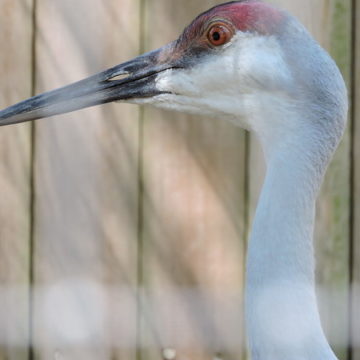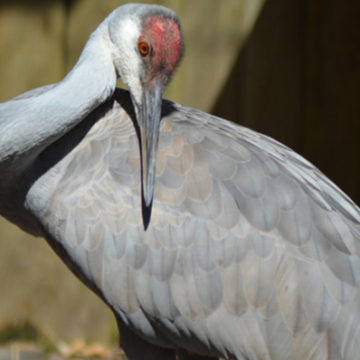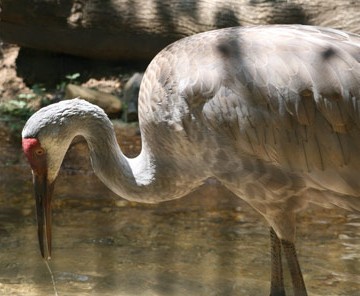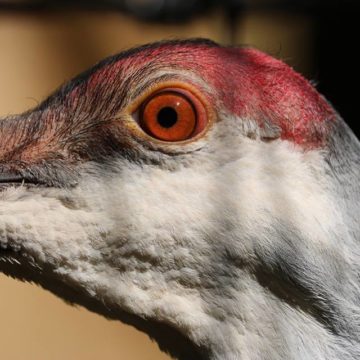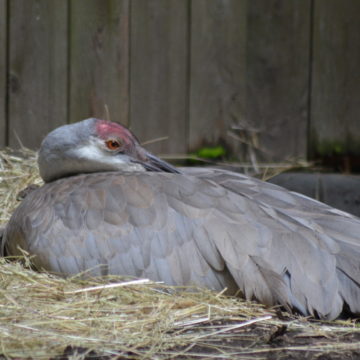SANDHILL CRANE
GRUS CANADENSIS
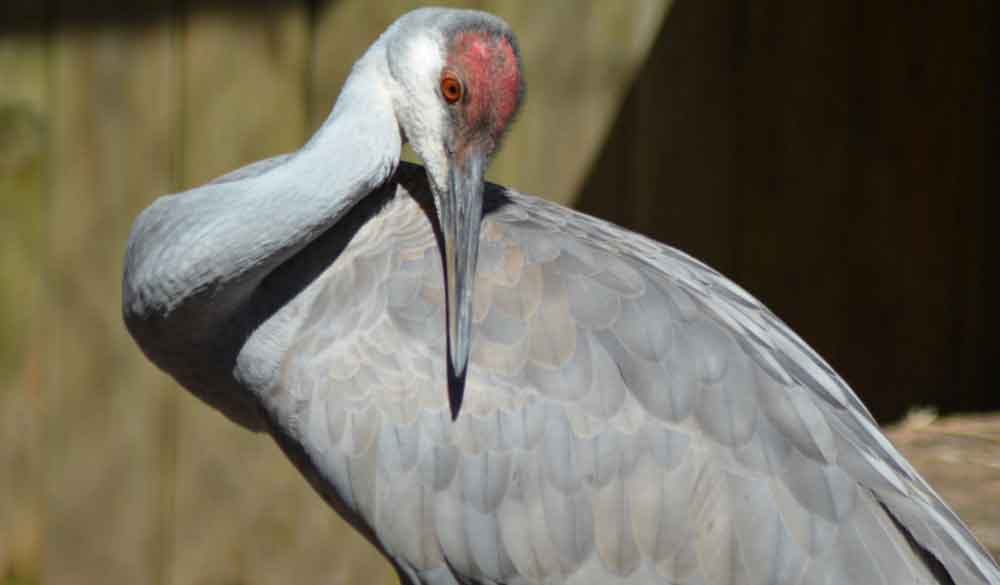
HABITAT
Prairies, fields, marshes, tundra, usually nests around marshes or bogs.
GEOGRAPHIC REGION AND RANGE
Breeds in northern United States, particularly Alaska, and Canada during the summer and winters in southern United States and Mexico.
DIET
Insects, roots of aquatic plants, rodents, snails, frogs, lizards, snakes, nestling birds, berries, seeds.
PHYSICAL DESCRIPTION
Tall bird with long neck, beak, and legs, a red crown and white throat, gray with tan body feathers that droop over the back end.
LIFESPAN
Natural Habitat: 20 years
Under Human Care: 20-40 years
THREATS
Loss and degradation of river wetland ecosystems are the most important threats to sandhill crane populations. The cranes used to roost in many prairie rivers, but today most of these rivers are regulated by dams, causing most of the sandbars, on which the birds roost, to be either submerged or covered in dense vegetation, such as willows, because the sandbars are no longer inundated by spring flooding.
STATUS
Least Concern
FUN FACTS
Sandhill cranes defend themselves by jumping and kicking.
Sandhill Crane chicks are also called “colts.”
Cranes are the tallest flying birds. The Sarus Crane, an Asian crane species related to sandhill cranes, is the tallest of this group.
Sandhill cranes can fly 25-35 mph; they typically travel 200-300 miles in a day while migrating, but can reach 500 miles with a good tail wind.
They can reduce the amount of blood in their legs and feet by constricting blood vessels. This allows the cranes to stand in freezing water for hours!
What are AZA Zoos doing for Sandhill Cranes?
AZA zoos host and breed many species of cranes that are endangered in the wild in conservation breeding programs (SSPs)- though there is no SSP for sandhill cranes. Organizations like the International Crane Foundation were critical in the recovery of Whooping Cranes, which at one time there were only 15 left in the world. Some species are even being bred using artificial insemination, including sarus, red-crowned, demoiselle, and blue cranes. In protecting habitat and breeding animals, zoos are helping to save crane species from around the world.
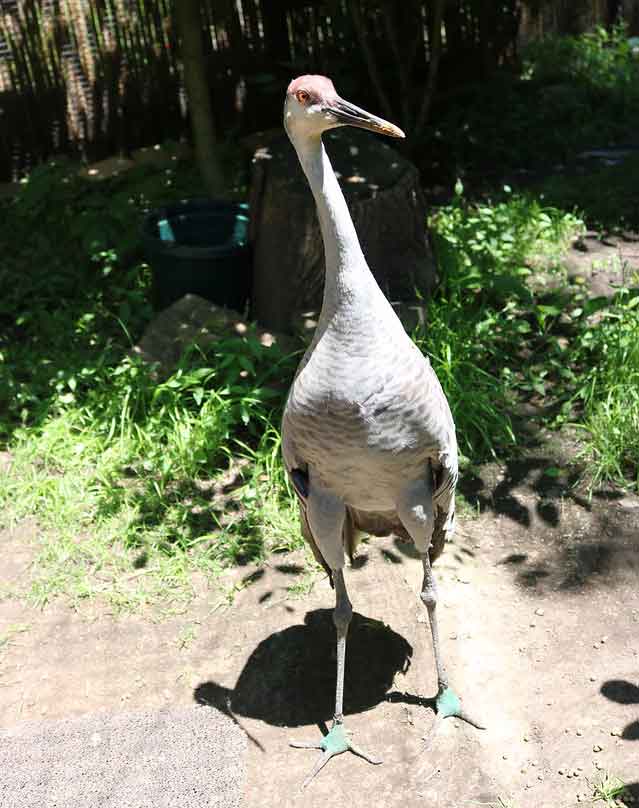
More images of our Sandhill Crane
